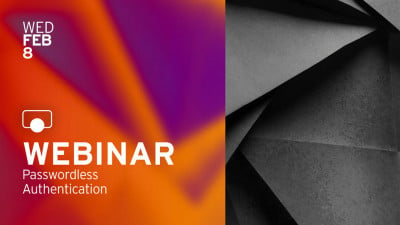Business is increasingly reliant on IT, from critical line-of-business applications, productivity and collaboration applications to e-commerce, and online customer services. In the modern world, it is more important than ever to ensure that the right people have access to the right systems at the right time, but that has become increasingly challenging.
Not only are IT systems distributed across on-prem installations and multiple cloud providers, but attackers typically use compromised or stolen credentials as their primary way of gaining access to company networks and systems. Therefore, the ability of organizations to manage who has access to systems, and to verify that credentials are being used legitimately, is key to being able to reduce risk of unauthorized access that is the enabler of a wide range of cyber-attacks.
Access Management has become increasingly complex in recent years, with the trend of working from anywhere accelerated and entrenched by the Covid 19 pandemic, which saw large number of people forced to work from home for the first time, with many reluctant to return to the office full time now that they have experienced the benefits of the flexibility of working from anywhere.
The pandemic also accelerated the adoption of cloud-based services by many organizations, and as a result, most organizations have hybrid IT infrastructure, where they are using on-prem IT resources in combination with cloud services, from not one, but multiple cloud service providers.
A third trend that was accelerated by the pandemic is the adoption of online business models by companies that would either not have considered it before or were planning to do so only in the longer term.
Working from anywhere, adoption of cloud services, online business models and a host of other digital transformation projects have been carried out by many organizations far sooner than they intended and way sooner than most would have predicted.
Due to these changes made out of competitive necessity, most organizations have had to adapt to new business IT environments, providing digital experiences for customers, prospects, and partners, and ensuring they all have secure, authenticated, and authorized access to systems and services.
It is therefore important for organizations to understand the link between Access Management and risk, to understand how to modernize their Access Management capabilities, to understand the emerging trends in the market, and to understand new approaches to Identity and Access Management.
Only by understanding these four things, can organizations plan to effectively improve login experiences for employees, partners, and customers alike, while at the same time improving security, and above all, reducing the risk of cyber intrusions and attacks, and potentially costly regulatory compliance violations.
“Offices have become virtual places without a physical ‘inside’, and this is why traditional Identity & Access Management has come to its limits. Organizations need to strengthen identity proofing abilities, better mitigate remote workforce risk, provide customers with a seamless digital experience, and improve partner and vendor management skills.”
— Martin Kuppinger, Principal Analyst, KuppingerCole.
Because we understand the importance of effective Access Management, and because we are committed to helping your business succeed, KuppingerCole has a great deal of content available in a variety of formats, including live events such as the free KC Live event on 7 December on Access Management: Managing Your Risk.
Register for free to learn about the future of access management, the role of contextual intelligence, verifiable credentials, decentralized identity, how to use verifiable credentials, best practices, the size of the market, and the link between Access Management and Risk.
Audio/video
A good place to start learning more about the path to successful Access Management is this perspective from our Principal Analyst, Martin Kuppinger on How to Find the Right Strategy for Access Control Management.
Access Management was the focus of one of the workshops at the recent Cybersecurity Leadership Summit in Berlin. To find out how to achieve the highest level of control, compliance and transparency with little effort, have a look at the workshop on the Implementation of a Risk Class Model Within Access Management.
Building a modern Identity and Access Management requires seamless integration and secure access of everyone and everything. Have a look at this panel discussion from a KC Live event on The Future of IAM that explores how to ensure a modern, secure and flexible identity foundation that breaks down legacy identity siloes and this panel discussion on What does the future hold for Identity and Access Management?
For conversations with our analysts on Access Management listen to these analyst chat on the Access Management Leadership Compass, the Market Compass on Policy-Based Access Management, and on Policy-based and Dynamic Authorization Management.
For a presentation on how organizations can rethink, redesign, and modernize their Identity and Access Management (IAM) architecture by implementing PBAC (Policy Based Access Control), have a look at this KC Live presentation on: Modernizing IAM - Implementing Policy Based Access Management & Governance.
Get some industry-based examples of how policy-based Customer Identity and Access Management (CIAM) can help meet the challenges of providing a more customer-centric approach by watching this presentation on: How Policy Based CIAM can Improve the Customer Journey.
And for a perspective on the link between Access Management and defending against ransomware, have a look at this presentation from this year’s EIC on The Role of Identity & Access Management for Ransomware Resilience and this presentation that explores The Importance of a Centralized Access Management System.
Insights
KuppingerCole Insights provide good overviews of key topics. For a general overview, have a look at this Insight on Identity and Access Management, and for an overview on a more specific aspect of Access Management, have a look at this Insight on Privileged Access Management.
Research
Get up to date insights to the leaders in innovation, product features, and market reach for Access Management on-premises, cloud, and hybrid platforms in this Leadership Compass on Access Management.
For an overview of the market for Zero Trust Network Access (ZTNA) solutions, have a look at the Leadership Compass on Zero Trust Network Access.
The Cloud Identity Entitlement Management (CIEM) process framework and KuppingerCole’s Dynamic Resource Entitlement & Access Management (DREAM) model are both aimed at helping organizations deal with Access Management in today’s hybrid, multi-cloud environments. Find out more about the technologies that support these approaches in this Leadership Compass on CIEM & Dynamic Resource Entitlement & Access Management (DREAM) platforms.
Learn more about how to future proof your organization by switching to policy-based access controls by looking at this Market Compass on Policy Based Access Management.
Get some insights into policy-based access management in the context of DevOps by having a look at this leadership compass on Privileged Access Management for DevOps.
Webinars
Success in digital business depends largely on meeting customers’ ever-increasing expectations of convenience and security at every touchpoint. Discover how to find the best strategy to achieve the optimal balance between security and convenience in this webinar on A Winning Strategy for Consumer Identity & Access Management.
Find out how best to integrate information securely from across the organization to achieve a unified view of a customer in this webinar entitled: Maximizing the Benefits of Customer Identity & Access Management.
A Zero Trust model of strict access control for every user or device protects your organization from advanced security threats enabling you to stay connected, productive and secure. Learn more by watching this webinar on Zero Trust Through Dynamic Authorization and Policy Driven Access.
Contemporary access control has progressed from static entitlements. Learn more about how and why this has changed by watching this webinar on The Evolution of Access Control.
In the digital age, collaboration is becoming more dynamic and integrated than ever before. External partners often require specific information, and therefore need access to internal systems. Find out how to provide efficient processes to manage partners and build a strong partner network in this webinar on A Delegated Model for B2B Access Management.
Whitepapers
Although it enables a Zero Trust security approach, the journey to passwordless is often challenging and may require an organization to use multiple authentication methods to meet their varied use cases. To learn more, have a look at this Whitepaper entitled: A Passwordless Future Begins with Credential Management.
To explore the various solutions for SMBs who struggle with Access Management when moving to the cloud, have a look at this Whitepaper on Fast Access Management in the Hybrid Cloud for SMBs.
Tech Investment
Organizations investing in technologies to improve access management can have a look at some of the related technology solutions that we have evaluated:
- SailPoint Access Risk Management
- PortSys Total Access Control
- Thales SafeNet Trusted Access Platform
- Atos DirX Access
- Microsoft Entra Permissions Management
- IndyKite Knowledge-Based Access Control (KBAC)
- NETAND HIWARE Privileged Session Management (PSM)
- ForgeRock Access Management
- PlainID Policy Manager
- Evidian Identity & Access Management






































